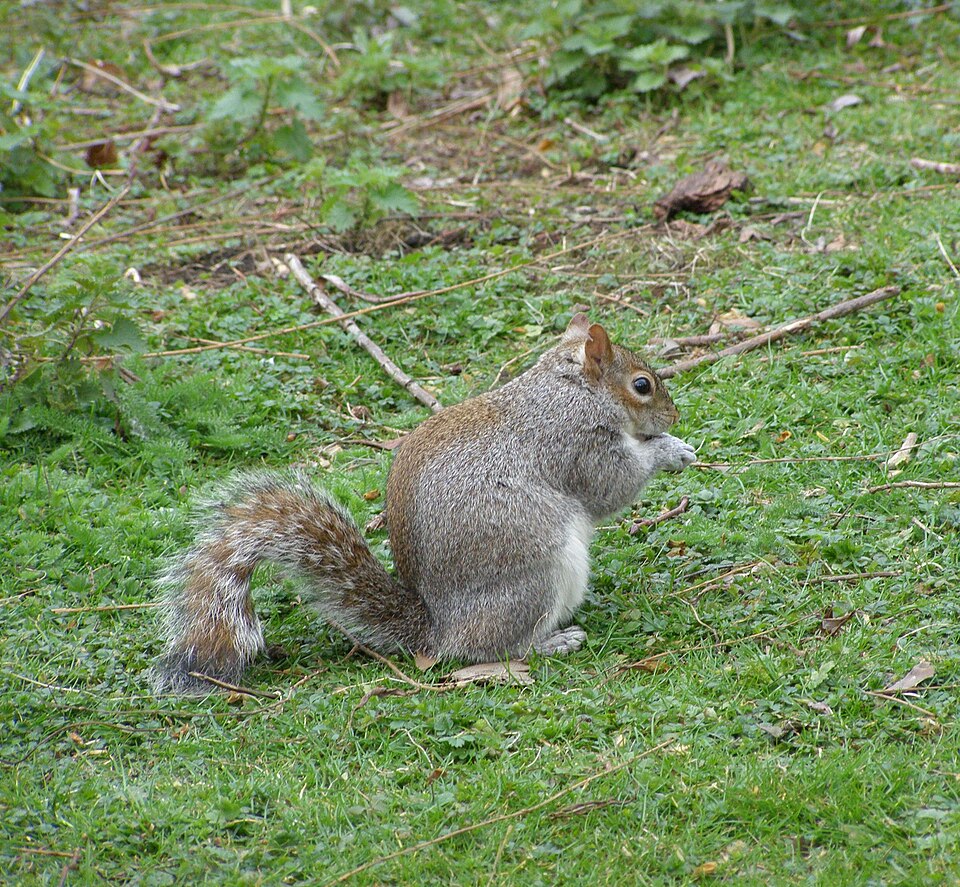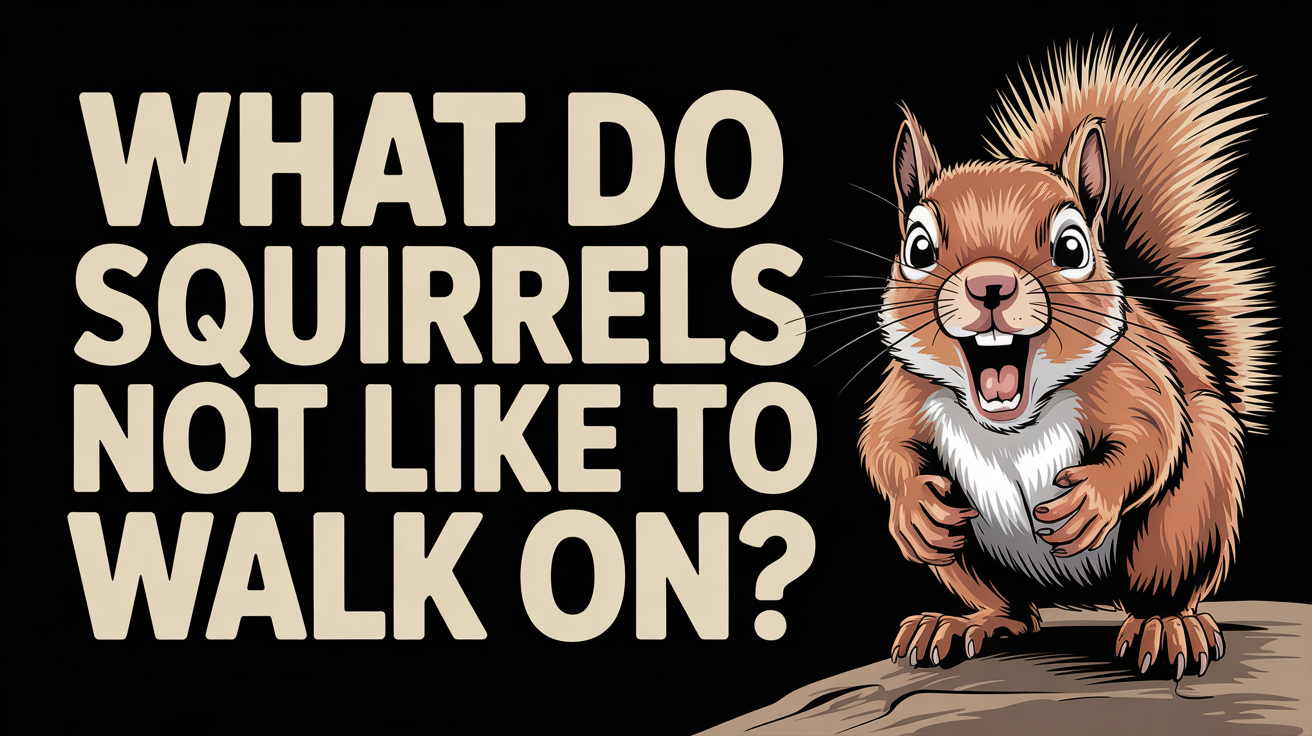“Squirrels don’t like to walk on sticky, unstable, or sharp-feeling surfaces. Materials like polybutene, aluminum flashing, or textured mesh irritate their feet and throw off their balance, making them think twice before coming back.”
If you’re hearing squirrels scampering across your roof, spotting them perched on your fence like they pay rent, or even suspect you have a squirrel in attic spaces, you’re definitely not alone. In Dallas, with its canopy of mature trees, cozy attics, and ever-popular backyard bird feeders, it’s no surprise that squirrels consider it prime rodent real estate. If you’re looking for a way to keep squirrels away from your home without harming them, the secret might be right under their feet.
Although they’re agile climbers, squirrels are surprisingly sensitive about where they step. Certain surfaces—especially ones that feel sticky, slippery, or unstable—can instantly throw them off. In this guide, we’ll walk through the textures and materials squirrels hate walking on, why they’re effective, and how to apply them in humane ways around your property. Whether you’re dealing with a curious visitor or a full-blown rodent invasion, you’ll find smart, no-drama tips to stop the foot traffic fast.

The Psychology of Squirrel Feet
Squirrels are acrobats of the animal world. Their feet are equipped with sharp claws, padded toes, and sensitive nerve endings that help them navigate thin branches, vertical walls, and tight spaces with ease. But that sensitivity is also their weakness—certain surfaces throw them off balance or irritate their feet enough to make them steer clear.
They rely heavily on grip and tactile feedback to feel safe while moving. If a surface is too slick, too sticky, or just feels “off,” squirrels will often avoid it altogether. That’s why deterrents that mess with their foot contact are surprisingly effective. It’s not about hurting them—it’s about making your property feel like a place they’d rather skip.
Here’s what squirrels are known to avoid:
- Anything sticky or tacky underfoot
- Unstable, uneven, or wobbly textures
- Materials that feel sharp or uncomfortable
- Surfaces that block their claws from gripping
When used strategically, these materials act like invisible fences—keeping squirrels out without you needing to lift a finger once they’re in place.
Sticky Deterrents—Why Squirrels Hate Polybutenes
One of the most effective ways to make squirrels think twice about climbing your home is by using a sticky substance called polybutene. This adhesive material creates a tacky surface that irritates their feet without causing harm. As squirrels attempt to walk across it, their paws stick just enough to make the experience annoying and uncomfortable—often enough to keep them from coming back.
According to pest control pros and even Google’s featured answers, “Polybutenes create a sticky lubricant that can deter squirrels from scaling railings and buildings. As they walk across the material, their feet may become stuck, which could cause so much irritation that they don’t return.”
You can find polybutene-based squirrel deterrent products in most Dallas-area hardware stores like Lowe’s, Home Depot, or online. They’re commonly applied to:
- Roof edges and gutters
- Fence caps and ledges
- Bird feeder poles
- Balcony railings
Heads-up: Don’t apply it to areas where birds or pets walk—it’s not toxic, but it’s definitely messy. For larger or trickier spaces, you can also hire a local wildlife removal service (like AAAC Wildlife Removal of Dallas) to apply it safely and professionally.
Textures and Surfaces Squirrels Avoid
Squirrels may be agile, but they’re not fans of weird or uncomfortable textures. Surfaces that block their claws from gripping or feel unstable underfoot can be enough to send them in another direction. These materials create a physical barrier without the need for traps or harsh chemicals—perfect for Dallas homeowners looking for low-maintenance squirrel deterrents.
Here are a few go-to options that squirrels don’t like walking on:
- Wire mesh – Galvanized ¼-inch hardware cloth works well on fence tops and garden beds.
- Aluminum flashing – Slick and nearly impossible to grip, it’s ideal for wrapping around tree trunks or poles.
- Crushed gravel or seashells – Coarse textures irritate their feet, making them avoid garden paths and planter areas.
- Plastic bird or squirrel spike strips – These are harmless but uncomfortable, and great for fence lines and windowsills.
Use these materials around:
- Bird feeders and garden boxes
- Roof edges and attic vents
- Tree trunks and fence tops
- Planters or spots where squirrels dig frequently
The best part? Most of these options are weather-resistant and blend well into your landscaping or home exterior—keeping squirrels out without turning your property into a booby trap.
DIY Surface Hacks You Can Try at Home
Not ready to commit to commercial squirrel deterrents? No problem. These DIY solutions use everyday household items and are perfect for testing what works before investing in more permanent fixes. They’re budget-friendly, pet-safe, and great for experimenting with deterrent zones around your Dallas home.
Sticky Tape Barriers
Squirrels hate getting their feet stuck—even temporarily. Double-sided tape is an easy, low-effort deterrent that works especially well on narrow surfaces.
Where to use it:
- Porch railings
- Balcony bars
- Window ledges
Why it works: The tacky texture surprises them and makes the surface feel unreliable.
Aluminum Foil Wraps
Foil might seem too simple, but squirrels don’t like the way it feels or sounds. It shifts under their feet and makes an unsettling crinkle that they’d rather avoid.
Where to use it:
- Deck posts
- Tree wraps
- Fence rails
Why it works: It creates a slick, noisy surface that messes with their grip and nerves.
Rubber Shelf Liner Grips
Textured, non-slip shelf liner (the kind you use in drawers) can double as a squirrel deterrent. It disrupts their balance and feels unnatural underfoot.
Where to use it:
- Planter boxes
- Ledges
- Bird feeder platforms
Why it works: It provides an unstable walking surface that prevents confident movement.
Dallas Conditions That Affect Deterrent Success
Dallas’s unique mix of weather and wildlife can make squirrel control feel like a moving target. Blazing heat, sudden downpours, and plenty of squirrel-friendly foliage all factor into how well your repellents hold up. To successfully repel squirrels long-term, you’ll need to think beyond one quick fix and build a flexible, durable strategy that accounts for local conditions.
Heat and Humidity Break Down Adhesives
Summer in Dallas isn’t just uncomfortable for humans—it’s brutal on sticky deterrents. Products like polybutene can start to melt, slide, or lose effectiveness under high temperatures. When applied to metal fences or railings, they may also attract dirt or fade away after repeated sun exposure or rainfall. That reduces their power to repel persistent squirrels and could leave you reapplying more often than expected.
To work around this, apply sticky materials in shaded or semi-covered areas and monitor them regularly. Pairing adhesives with dry deterrents like cayenne pepper or a capsaicin-based spray can add extra punch. Just remember: even the strongest products need some backup in Dallas’s unpredictable climate. Rotate solutions if needed, and don’t rely on one texture alone to do all the heavy lifting.
Local Trees Attract Hungry Squirrels
Dallas is packed with pecan, oak, and fruit trees—perfect nesting and feeding spots for squirrels. These trees, along with unsecured bird feeders and pet food bowls, create ideal conditions for nuisance squirrels to move in and nest nearby. Even if your deterrents are solid, a steady food source will keep these rodents coming back and finding new ways to sneak around your defenses.
Your best move? Remove the incentive. Rake up fallen nuts and fruit, seal your trash bins, and sprinkle spicy deterrents like hot pepper flakes or cayenne pepper around problem areas. Many homeowners also install motion-activated sprinklers or cover planters with allium (onion family) plants, which squirrels dislike. Every obstacle you add helps tip the balance in your favor.
Layering Tactics Makes a Bigger Impact
There’s no silver bullet when it comes to squirrel-proofing a Dallas property. The most effective strategy is to mix and match deterrents—stacking physical barriers, uncomfortable textures, and irritating smells that squirrels don’t want to deal with. When done right, it makes every step forward feel like a trap (in the best way possible).
Try combining sticky polybutene on rooflines, peppermint oil or capsaicin spray at entry points, and sprinkle crushed pepper or garlic powder near common climbing paths. Add a squirrel-proof cage around your bird feeder or garden box, and rotate tactics every few weeks to keep squirrels guessing. With consistent effort and layered defenses, your home becomes less of a target—and a lot harder for squirrels to enjoy.
Conclusion: Keep Squirrels Guessing with Smart Surfaces
You don’t have to trap, poison, or chase squirrels to keep them off your property. Sometimes, the smartest move is making your surfaces feel so weird, sticky, or uncomfortable that squirrels simply lose interest. From polybutene adhesives to foil wraps and wire mesh, the right texture underfoot can do a lot of the heavy lifting for you.
In Dallas, where squirrels have no shortage of trees and rooftops to explore, staying one step ahead means mixing methods and adjusting for the weather. Use what we covered—sticky deterrents, strange textures, and a little DIY creativity—to send a clear message: your space isn’t worth the trouble. And if they keep pushing their luck? Give AAAC Wildlife Removal of Dallas a call. We’ll help you squirrel-proof your home the right way—no guesswork, no mess.




